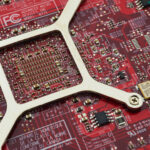Onsite Effluent System: Your Manual to Choosing & Maintenance
Were you aware nearly 20% of U.S. households utilizes a septic setup for wastewater treatment? This statistic shows the importance of it is to understand about septic effluent pumps. If you’re unfamiliar with septic systems or thinking of septic pump out near me, learning about septic pumps is key. It assists in handling waste at home.
This guide will provide you with an overview on septic setup pumps. It helps you keeping your wastewater pump operates smoothly and avoid costly repairs. By gaining knowledge about septic systems and the septic effluent pump’s function, you can make smart choices. These decisions will improve your sewage treatment’s effectiveness and longevity.
Understanding the Basics of Septic Setups
Septic setups are key for homes not hooked up to city sewage systems. They process and dispose of household sewage. Understanding how they function is important for keeping them running right.
What Is a Septic Setup?
A septic system is an underground setup for sewage treatment. It’s commonly found in countryside and residential places. It breaks down waste and liquids, letting waste to decompose organically with bacteria. The treated water then is absorbed by the soil, finishing the treatment.
Parts of a Septic System
The main components of a septic setup are:
- Conduits from the home
- Septic tank
- Drainfield
- Earth
These parts work together to process sewage well. The septic reservoir is where most treatment occurs. The drainfield spreads out the cleaned water into the earth.
The Processing of Wastewater
First, sewage goes into the septic reservoir. There, it separates. Waste materials settle to the base, and fats rises. This allows some breaking down happen with natural helpers.
Then, the liquid part goes to the drainfield. There, the earth cleans it further by removing contaminants. This renders the water safe to go back into the soil.
| Component | Description | Role |
|---|---|---|
| Pipes from the residence | Connect household plumbing to the septic reservoir | Convey sewage to the reservoir |
| Septic tank | An subterranean chamber for primary sewage treatment | Separates waste and fluids for breakdown |
| Leach field | A network of channels filled with stones | Distributes cleaned effluent into the soil |
| Soil | Naturally occurring earth materials | Filters impurities from effluent before reaching underground water |
Significance of the Septic Effluent Pump
The septic wastewater pump is key to a septic system’s effectiveness. It makes sure treated sewage moves out smoothly. Homeowners who use these systems benefit a lot from understanding how it functions.
What Exactly is a Septic Wastewater Pump?
A septic effluent pump is designed to propel treated liquid from the septic tank to the drainfield. It’s vital when the drainfield is elevated. Without it, the setup might not function properly, resulting in large repair costs.
Its Role in Sewage Treatment
The pump’s job begins after solids decompose in the reservoir. Then, it sends the fluid to the drainfield. There, it is purified by soil microorganisms. This maintains the septic system and the surroundings healthy.
Selecting the Appropriate Septic Wastewater Pump for Your Needs
Choosing the appropriate septic wastewater pump is key to a efficient wastewater system. There are many choices, each tailored for different requirements. Knowing the types of pumps and what to consider helps in making an informed decision.
Varieties of Septic Pumps
Here are some main types of septic pumps:
- Underwater Pumps: These pumps operate beneath the surface and are best for profound setups.
- Waste Pumps: Designed for transferring sewage, they manage large solids and are crucial for the system to function properly.
- Wastewater Pumps: These pumps are for transferring treated sewage from the tank to the leach field, maintaining continuous flow.
Things to Think About When Choosing a Pump
When selecting a septic pump, think about these things:
- Horsepower: Select a pump with the appropriate horsepower for the amount of wastewater you have.
- Flow Capacity: Figure out the required flow rate you need for the pump to work well.
- Depth of Installation: The pump’s installation depth matters, affecting the type you require.
Recommended Brands and Types
Some manufacturers stand out for their excellence and reliability. Here are a few:
- Zoeller: Offers reliable wastewater and submersible pumps.
- Liberty: Has a range of wastewater and sewage pumps for long-lasting performance.
- Wayne: Renowned for reliable underwater pumps and robust performance for residences.
Consulting professionals can assist you pick the best septic pump for your needs.
Septic Effluent Pump: Your Care Guide
Keeping your septic effluent pump in optimal condition is key to a working septic system. If you ignore it, you might encounter problems and expensive fixes. Routine maintenance prolongs the pump’s life and ensures your septic setup healthy.
Routine Care Necessities
For your septic reservoir pump to work well, you need do routine checks. Examine the pump every three years. Be sure to:
- Check the pump functionality and efficiency.
- Verify all electrical connections are properly connected.
- Clear any debris or obstructions from the pump area.
- Inspect the float switch for correct operation.
Routine maintenance prevents the pump from malfunctioning prematurely. Hiring a pro like experienced service providers can enhance your maintenance efforts.
Signs Your Pump Needs Attention
Be alert to certain signs to know when your septic wastewater pump requires work. Look out for:
- Strange noises from the pump.
- Backups in plumbing fixtures.
- Delayed drainage in household fixtures.
- Bad smells near the septic tank.
Fixing these issues promptly avoids greater expenses. Recognizing these indications allows you can act fast, safeguarding your septic setup.
| Care Duty | Frequency | Objective |
|---|---|---|
| Inspect pump functionality | Once every three years | To ensure optimal performance |
| Secure wiring | Every inspection | Avoid wiring issues |
| Remove blockages | Whenever necessary | Ensure uninterrupted flow |
| Inspect float switch | Every inspection | Ensure correct activation of pump |
Common Issues with Septic Pumps
Septic pumps are vital for a functional septic setup. They can encounter various issues that affect their work. Knowing the indications of septic pump malfunctions is key for residents. Be vigilant for unusual noises, frequent overflows, or saturation in the drainfield. Identifying these indications early can avoid larger issues later.
Recognizing Pump Malfunctions
Septic pumps frequently malfunction due to physical or power-related problems. Monitoring your septic system can assist you detect problems early. Watch for changes in how frequently the pump cycles or strange smells around the reservoir. These indications mean there might be a problem. Identifying these problems early can prevent bigger complications.
Precautionary Steps to Prevent Issues
Regular maintenance keeps your septic pump operating smoothly. Examining the setup often, using water wisely, and disposing of waste properly helps a lot. Avoid putting things like grease, toxic substances, or non-biodegradable items in the setup. Adhering to these steps helps maintaining your pump operating efficiently and reduces the likelihood of big failures.


